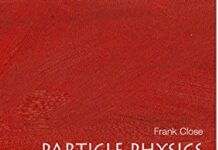
Ebook Info
- Published: 2004
- Number of pages: 260 pages
- Format: PDF
- File Size: 18.30 MB
- Authors: Frank Close
Description
During the 20th century, scientists discovered what the Universe is made of; as the 21st century begins, they are preparing experiments to find out how it came to be like this. This great adventure, which will involve a metaphorical journey back in time to within a billionth of a second of the Big Bang, is the latest stage in the quest to understand the nature of the matter that makes our Universe and the forces that govern it.The Particle Odyssey takes the reader on a spectacularly illustrated journey to the heart of matter. In clear, non-technical language the authors describe the key experiments and fundamental discoveries which have led to our current understanding of the origins and nature of the material universe.In this fascinating book, you will find individual ‘portraits’ of all the major subatomic particles, from the electron to the top quark. The authors describe the history of experimental particle physics: its origins in the discovery of X-rays in 1895; the dissection of the atom by Rutherford and others; the unexpected revelations of the cosmic rays; the explosion of new particles in the 1950s and 60s; the discovery of quarks and the rise of the ‘standard model’ in the last part of the 20thcentury. And they also look at the great challenges that face physicists today—where did antimatter go? what is dark matter? can there be a theory of everything?—and the experiments they are devising to explore them.The Particle Odyssey brings together and presents with style over 100 of the best images of particle ‘events’: mysterious, abstract, beautiful pictures of the tracks of subatomic particles as they speed, curve, dance, or explode through cloud and bubble chambers, stacks of photographic emulsion, and the giant multi-element detectors of modern experiments. Here are spiralling electrons, the tell-tale ‘vees’ of strange particles, matter and antimatter born from raw energy, energetic jetsof particles spraying out from the decay points of quarks and gluons. A further 250 pictures, many taken specially for this book, illustrate the laboratories, experiments, and personalities of over a century of particle physics.This superb book is a testament to the work of ‘big’ science and one of the great detective stories of our age.
User’s Reviews
Reviews from Amazon users which were colected at the time this book was published on the website:
⭐UPDATE: took me about 2 weeks and 2 hours a day so slog through this monster, but i did it and i was 100% right it was THE book to finally break my mental blocks about particle physics! and it gave me a THOROUGH understanding (not just knowledge!) of the whyfors and whens of the entire subject. (i could have lived without knowing who got the Nobel prize and when though). this is a daunting book though…it covers the WHOLE particle accelerator subject..much more than most people will EVER need to know, but i feel exhilirated by it all and can’t wait to delve deeper into the subject. AND if you watch NOVA Season 13 episode 1 “The big bang machine” you will be completely up to date in this field (and on the parts not covered by this book being as it was written before CERN went online). AND you will have a THOROUGH understanding of EXACTLY what these scientists on NOVA are saying to boot! buy it.While i have little doubt this book is my key to learning a difficult subject that has eluded me for decades despite my genius level IQ, his use of every conceivable synonym of every possible particle is absolutely INFURIATING! i have to keep putting the book down to calm down and continue. I’m on the 4th chapter and overall this book is brilliant and covers the subject thoroughly and most importantly describes HOW these conclusions about matter were made and when and by whom…which allows me to doubt and re-think all of their conclusions (so i am UNDERSTANDING the subject not just gaining knowledge of it…big difference here people!). Sadly it is desperately outdated being written originally in the 70’s then rewritten in 2002 BEFORE the CERN supercollider went online!! And how about a glossary? or a bibliography. Anyway…if only he would say “proton” (when he means “proton”) and not “alpha” or “ray” or “nucleon” or whatever the heck i’d be able to follow a LOT easier, so please use ONE WORD for each particle and stick with it throughout!!! If not for that this would be a 5-star book, lacking only a bibliography and glossary.
⭐quite sometime bsck i read a Frank close book on particle physics. it put me in a state that i had to know moreabout this intrgueingscience. when isaw this book on amazon i couldn’t wait to fire up my kindle to the 3g and obtain this book.particle physics is just so exciting Frank explains things perfectlyas though you were in a university lecture theatre.after reading this wonderful book, i just sat back in my recliner and mused over what i had just read. looking at my hands arms and skin i floated away in my imagination world, now i wonder which super nova did my carbon atoms come from, that’s science it opens ones mind to thoughtgetting right back to basicsof how we and our little blue planet came about. just great, i suggest that anyone interested in particle physics by this and others like it and really enjoy some deep thought.you don’t have to be a PHD student, i am not. nor have i studied this sciencein any way, ijust read and wonder,with amazement,at our beautiful universe. but keep an open mind, if you are acreationist it may be harder to unite all the pieces together to form what we have evolved into today. buy this well priced book from amazon, you will be rewarded with wonderment.ENJOY–
⭐Rarely does a scientific book achieve the successful balance of well-written content and lavish, relevant illustration. The Particle Odessey sets a new standard for popular scientific books. The historical overview of particle physics tell the stories with tantilizing detail without distraction. The photos generously embellish the storyline and in many cases, are astonishing to say the least. This book deserves prominent display on your bookshelf and would be a great gift to the science buff looking for a great read. One of the best books in popular science available…
⭐It’s OK for total novices. If you really have some basic knowledge in particle physics, you will be rather disappointed with the information available in this book.
⭐I don’t have anything better to say about this book than has already been said. I just want to contribute my five stars. Holy cow, it’s really good.
⭐A History book with little real physics.
⭐The reason I got into physics in the first place was the combined allure of subatomic strangeness and huge machines at the edge of technology and cleverness. This book distills those attractions in beautiful descriptions and stunning photography. If I ever needed reaffirmation in my choice to become a particle physicist, this book would surely do the trick.
⭐It is a great book to obtain important information.
⭐Particle physics is one of the most difficult but also interesting parts of modern physics because it deals with the fundamental constituents and forces that built matter. Its difficulty lies on the necessity of good knowledge of quantum mechanics and especially quantum field theory in order for one to understand the complexity of the Standard Model theory governing the world of particles.This magnificent book, even though in no way can be considered as a particle physics book, it manages to convey the beauty of this abstract layer of reality and make it more tangible with the multitude of photos pertaining to machines and particle events.Essentially is more a book presenting the history of the discovery of the most renowned particles of the Standard Model than a book for accelerators even though the principles behind particle accelerators and detectors are mentioned and exemplified to an adequate extend.The uniqueness of this historical presentation is the exposition of very informative processed photos and event graphs from various particle physics detectors, pertaining to the events which helped discover the various particles. It is the magic of these pictures that function as an actual magnifying glass and help this elusive world of events to emerge in front of the reader’s eyes, from the actual dimensions of micrometers and nanoseconds durations.Its historical extend cover the time since the discovery of electron form J.J Thomson to the recent days just before the monumental proof of the Higgs boson existence form the HLC at CERN. This evolution in the accumulation of human knowledge in the tangible subatomic world of physics is unavoidably augmented and complemented from the parallel evolution of the machines that helped probing this realm.The style of writing is captivating and permeated from the fantasy and love that all physicists have for their science and the only drawback that I found was the complete absence of even the simplest Feynman diagrams that could have accompanied the photographical presentation of the various events. Such an addition it could have helped a better exposition and understanding of these events. A significant omission is also a very simple table of the classification of the various elementary particles in agreement with the Standard Model, even though there are analytic tables of the particles and their characteristics at the end of the book.Despite the very friendly and free style of writing, this is not a book for a layman. It is indented for physicists or at least readers that have elementary knowledge of Special Relativity, quantum mechanics and elementary particle physics.This colorful exposition of the particle physics world is a book that the reader will enjoy the most and for sure rekindle its interest, love and awe for the magnificent science of Physics and the army of renowned geniuses that helped mankind to explore the deepest depths of matter.
⭐* PhysicalThe book I have read is in paperback. The high quality color images are printed upon excellent quality paper and is very securely bound for a paperback.* What is the readership target audience; H.N.D, Degree, or Post Graduate?In my opinion, this book requires some ‘A’-level physics and Chemistry background. The book has applied this thin background requirement and spread it widely to show what is to be explained.* Historical rootsIt starts with an historical background of the topic. And briefly covers the world wide working to discover the detection of the electron, splitting the atom, X-rays and radioactivity, and discovery of the source of natural gamma rays.* Increases in accuracy of measurements due to technological breakthroughsThe book explains the background of particle physics and how its linked to worldwide technological advances. And also due to the requirement of increasing precision of measurements within various forms of bubble chambers, linear accelerators and later circular Colliders. The sheer number of detectors to give high accuracy requires lots of high density cabling and makes involved construction and are among the most complex machines ever built. The book explains these devices – more of linear accelerators and colliders – to use doughnut shaped electromagnets to gradually accelerate and bunch together the particles and see how they behave when they interact with each other. The resulting devices show how matter behaves when accelerated and to capture this on film emulsion, then later sensors and then electrical CCD and computing technology.* MeasurementsThe latter usage of computing methods boosts accuracy as the results can be visually mapped from many differing angles. The particles are subject to multiplications of the electron volts (eV) as a measure of energy of controlling the particles. The older machines had lesser multiples of (eV)- i.e. KeV – to accelerate these particles and the later machines have greater multiples of this measure to make and control particles – GeV or even TeV.* Examples of world wide researchThis fundamental research is a world – wide resource of many countries and many scientists over a long period of time. Well known centers such as CERN, Fermilab, Cornell New York, Laurence Berkley Labs are amongst the well known ones.* Brief results of researchSome of the resulting discoveries are of Quarks and Leptons as being fundamental sub- components of well- known particles. Such as the development concepts of quarks into subcomponents with names such as UP, DOWN, STRANGE, CHARM, BOTTOM, and TOP, and the concept of the glueon, the binds atoms together. The CCD ‘charged couple device’ used in digital cameras world-wide were developed originally for this level of research. Its well -known that the ‘WWW’, was originally developed to organize and coordinate the many strands of research of many scientists into a file linking and handling method.* SummaryThis book needed to be read cover-to-cover at least twice just to take in all this information. The book is full of beautiful images and as said before is on high quality paper. The book is a fine introduction to a level of study I had to be honest not much experience with. But I am glad I read it.
⭐Book is totally awesome. Extremely well written, and very worth, while information Received very quickly and well worth it.
⭐Apprendre agreablement histoire de la physique des particules sans appareil mathématique
⭐
Keywords
Free Download The Particle Odyssey: A Journey to the Heart of Matter in PDF format
The Particle Odyssey: A Journey to the Heart of Matter PDF Free Download
Download The Particle Odyssey: A Journey to the Heart of Matter 2004 PDF Free
The Particle Odyssey: A Journey to the Heart of Matter 2004 PDF Free Download
Download The Particle Odyssey: A Journey to the Heart of Matter PDF
Free Download Ebook The Particle Odyssey: A Journey to the Heart of Matter





